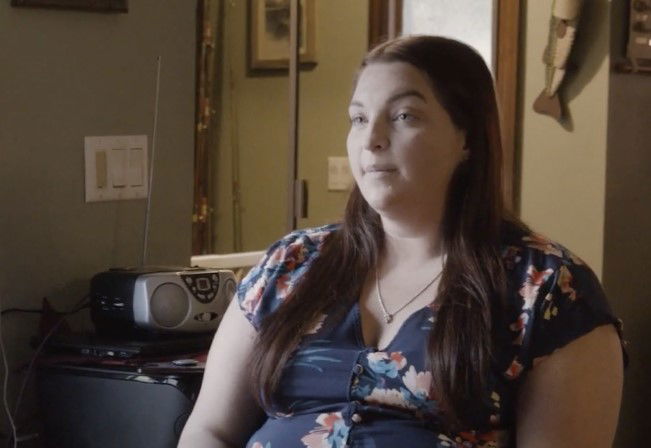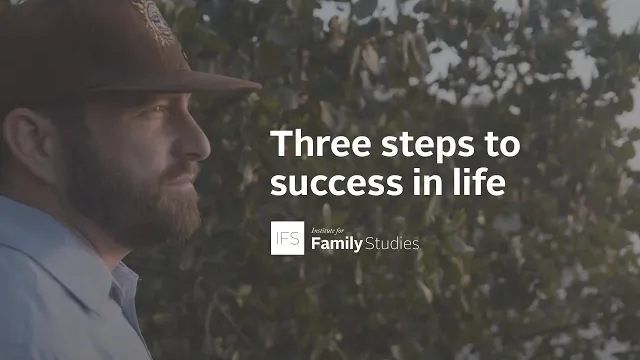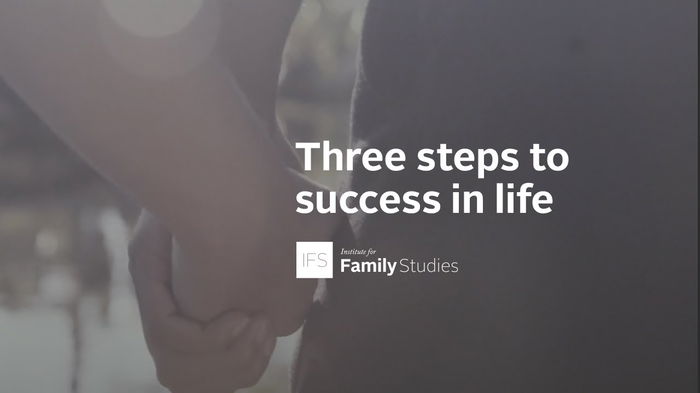Video Case Studies
Straight Talk About The Success Sequence
Table Of Content
What Is The Success Sequence?

The “Success Sequence” is a proven formula to help young adults succeed in America. It was first identified by social historian Barbara Dafoe Whitehead and Marline Pearson, a sociology professor and author of the Love Notes curriculum. It was later popularized by Brookings Institution scholars Ron Haskins and Isabel Sawhill.
Take these three steps, and you will be walking a path that leads to prosperity for men and women of all races and backgrounds:
- get at least a high school degree
- get a full-time job and
- get married before having children
In fact, the latest research shows that 97% of young people who follow all three steps are not poor as adults. And 90% of young adults who complete the first two steps (graduate high school and get a full-time job) are not poor in their 30s. In comparison, half of adults in their 30s who missed all three steps (52%) are in poverty.

Graduate high school
Education is the first step in the Success Sequence. A lot of people say, “If you want to achieve the American Dream, you have to go to college,” but that’s just not true. At least finish high school—or go to a technical school and become an apprentice. About 70% of young adults who graduate from high school will not be poor in their 30s.

Get a full-time job
Getting a full-time job is a big step forward, too. Work provides direction, discipline, and a community—not to mention money—all key ingredients for a good life. In fact, 90% of young adults who complete the first two steps will not be poor in their 30s. Some people may choose not to marry or have kids (the final step in the sequence), but those who complete the first two steps will be on their way to a financially secure life.

Get married—before having children
Most young adults want a family, so the last step is the most important of all: Get married—before having kids. For young adults who follow the sequence and get married before having kids, nearly all of them (97%) are not poor in their 30s. Putting marriage first, before becoming a mom or a dad, is a key step in escaping the trap of poverty. In fact, getting married before having children doubles your chances of realizing the American Dream (defined here as reaching the middle class or higher).
Of course, being able to pay the bills, which is really important, is not the only way to succeed. If you have kids after tying the knot, your family is also more likely to stay together. Compared to the children of married parents, children born to couples who just live together are twice as likely to end up in a broken home before they turn 12. Children born to unmarried parents are also more likely to be poor, to experience abuse, and get in trouble with the law.
Even though a lot of parents today are just living together, raising children in marriage is still the best path to a strong and happy family.
It’s never too late to take steps toward a brighter future and more stable family life: follow the Success Sequence.
Why The Success Sequence Matters
Education, work, and married parenthood are all keys to living the American Dream. Young adults who complete the Success Sequence, even in the face of big challenges, have a much better shot at achieving success, as scholars at the Brookings Institution have shown. This is true for every race and economic background in America. The vast majority of black (96%) and Hispanic (97%) Millennials who followed this sequence were not poor by their mid-30s, along with 94% of Millennials who grew up in poor families, and 95% of those who grew up in single-parent families.

The Success Sequence was once common sense. But unfortunately, far too many young people today are being taught the wrong lessons about how to start a family. Many young men and women also live hard lives, facing family dysfunction, father absence, poverty, or racism that can make getting a successful start in life feel like an impossible task. Although these challenges do make it harder to follow the three steps, the Success Sequence is a powerful and proven way for even the most disadvantaged men and women to avoid poverty and to have a shot at the stable, happy family life they really want.
All young people—not just those who come from rich families—deserve to know this “secret to success”: get an education, work hard, get married and then have children.
Follow the Success Sequence!
If you've gotten off course in the success sequence, it's never too late to get back on track.
About The "Straight Talk About The Success Sequence" Videos
“Straight Talk About the Success Sequence” is a project of the Institute for Family Studies to directly address young adults with the message of the Success Sequence, showing that no matter the challenges you face, there is a path to build a brighter future.
These three, six-minute videos highlight stories of real young adults who are seeking to follow the Success Sequence or to get back on track. The videos include commentary from: Brad Wilcox, an IFS senior fellow and University of Virginia sociology professor; Ian Rowe, a senior fellow at the American Enterprise Institute; Isabel Sawhill, a senior fellow at the Brookings Institution; and Catherine Pakaluk, an economics professor at the Catholic University of America.

Resources/Research
- Lucy Orr, "Success Sequence Fact Sheet," IFS
- Wendy Wang & Brad Wilcox, “The Power of the Success Sequence for Disadvantaged Young People," IFS
- Ron Haskins, "3 Simple Rules Poor Teens Should Follow to Join the Middle Class," The Brookings Institution
- Wendy Wang & Brad Wilcox, The Millennial Success Sequence, IFS and American Enterprise Institute
- U.S. Department of Health and Human Services literature review on the Success Sequence
- U.S. Department of Health and Human Services study on the economic benefits of the Success Sequence
- "Evaluation of 'Love Notes' & 'Reducing the Risk' in Louisville, KY: Final Impact Report," University of Louisville Research Foundation
- Anita Barbee, et al., "Impact of Two Adolescent Pregnancy Prevention Interventions on Risky Sexual Behavior," AJPH Research
- Interview with Anita Barbee on AJPH Research study of pregnancy prevention programs, MedicalResearch.com
- Articles on the Success Sequence via the Family Studies blog
- Success Sequence Curricula for Schools and Youth Programs, The Dibble Institute (forthcoming)
- Wendy Wang, "The Sequence is the Secret to Success," The Wall Street Journal
- George Will, "Listen Up, Millennials: There's a Secret to Success," Washington Post
- David Leonhardt, "Marriage, Baby Carriage, and Poverty," The New York Times
What You Can Do Now

- Follow the Success Sequence
- Teach the Success Sequence to your children
- Share the Success Sequence with your family and friends
About IFS
The Institute for Family Studies (IFS) is a research and public education organization whose mission is to strengthen marriage and family life and advance the well-being of children. Known for its objective and incisive studies that attract attention and respect from across the ideological spectrum, IFS’s programs and platforms focus on a number of trending marriage and family issues.












